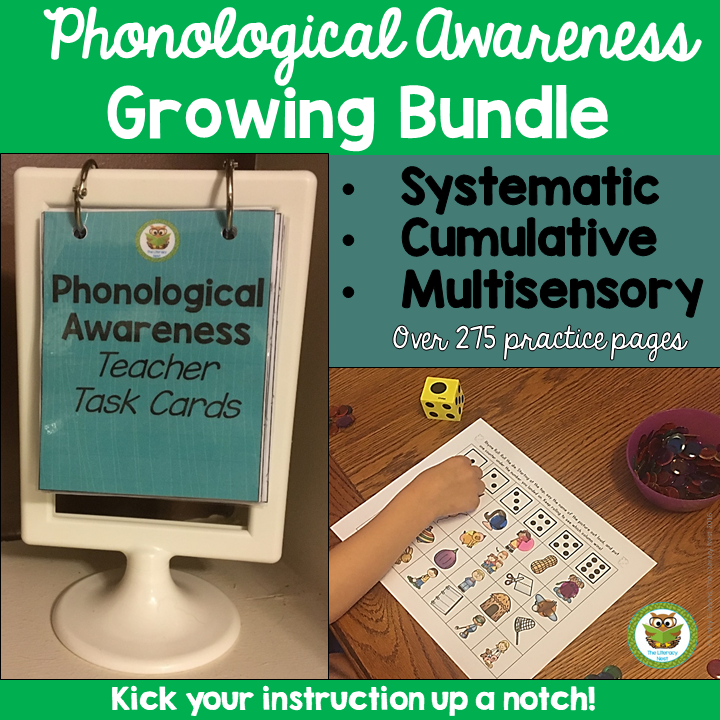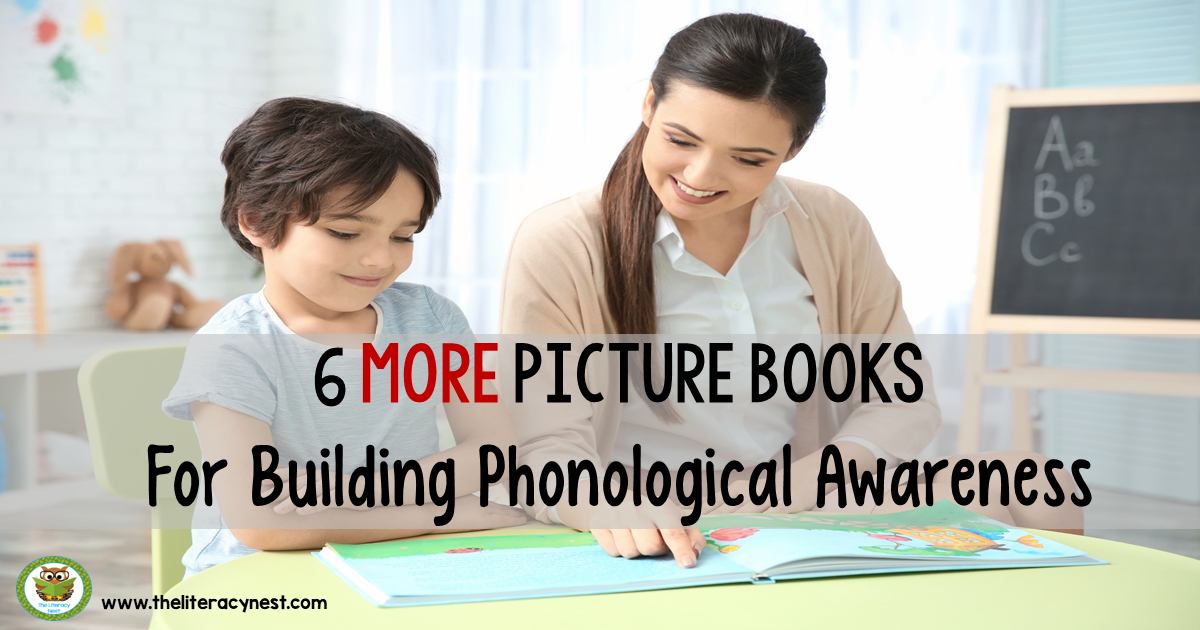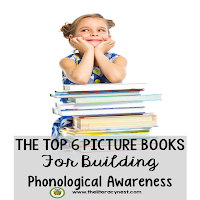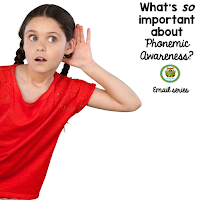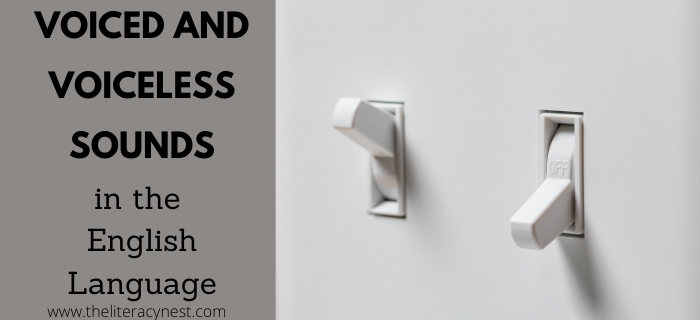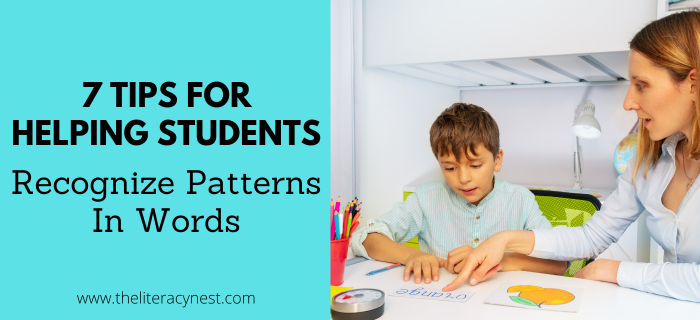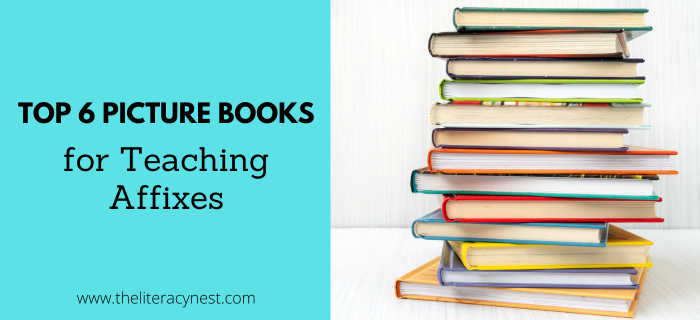Share:
Not too long ago, I shared 6 of my favorite read aloud books to
promote phonological awareness. I promised that there would be even more to come. Here they are! Not only are these great books for building phonemic awareness, but several of them have sequels that have similar structures and can be used to support similar skills. Since phonemic awareness is such a crucial skill, and is something striving readers often struggle with, it is wonderful to weave in stories and activities that build these skills at every opportunity. Bring along a couple of stories to explore next time you have to wait for an appointment and strengthen your child’s foundation of phonological awareness skills.
Here are some more favorite reads to add to your home or classroom library!
(This list contains affiliate links.)
This delightful story will appeal to all ages. Mrs. McNosh wakes up very early to get the washing done. What starts as a very ordinary list of laundry, quickly turns into a very silly tale, as Mrs. McNosh gets carried away putting everything, and I do mean everything, on the clothes line. This story lends itself to retelling and sequencing activities as well as phonemic awareness work. Since Mrs. McNosh always hangs up rhyming pairs, you could use those items for rhyme matching activities, or rhyme generation by finding more things that could be hung up with them. What if Mrs. McNosh hung things up by their first sound instead of rhyming? How would the object get hung up now? There are also several opportunities to look at how words that may sound the same aren’t always spelled the same way. If you enjoy this Mrs. McNosh book, you are in luck. The fun doesn’t end there. You can also check out Mrs. McNosh and the Great Big Squash or Oh My Gosh, Mrs. McNosh for more silly rhyming fun.
The rhyming dust bunnies love to rhyme. Ned, Ed and Ted are demonstrating their rhyming skills, but Bob has an important message to share about approaching danger. His friends grow frustrated with him for not rhyming, but soon realize their error. This book is great for generating words from a specific word family. Students have an opportunity to make as many rhyming words as they want to or are able to before turning the page and seeing the dust bunnies answer. thereby providing good rhyme generating practice. Finding the word that doesn’t rhyme is pretty easy in this case, but it isn’t always so. Using this story as a jumping off place for finding the “odd one out” in a group of words such as mad, sad, and pat helps to develop the ear not only for finding obvious non-rhymes, but trickier ones as well. For even more rhyming fun with Ned, Ed, Ted and Bob, you might enjoy the sequel, The Big Mean Dust Bunny.
Jillian Jiggs has a wonderful imagination but a very messy room. Her mother tries just about everything to get her to clean up her mess, but Jillian always has just one more thing to do. The longer format, rhyming couplets and delightfully detailed illustrations lend themselves to having students predict what the rhyming word is going to be at the end of each couplet. The repeated refrain of “Jillian Jillian Jillian Jiggs, your room looks as if it’s been lived in by pigs.” is perfect for having your student join in and read along. If you are delighted by Jillian’s imaginative play, there are more fun rhyming tales starring this messy fun loving girl.
Much like the beloved Amelia Bedelia, Mrs. Millie is always getting things mixed up. She frequently mixes up similar sounding words by changing a sound or syllable. In addition to being fun to predict what Mrs. Millie really means, this book makes a great introduction to advanced phonemic awareness skills like deleting a syllable, changing one of the syllables of a word or even changing the first phoneme. Having children figure out what Mrs. Millie mixed up about the word and what other words they could make using the same pattern is a great way to increase fluency and comfort with these tricky advanced phonemic awareness skills. This would be particularly suitable for older children or an overall review, because there are multiple types of phoneme and syllable manipulation within the story. There are several Mrs. Millie stories to enjoy as well, so the fun doesn’t stop here.
This book is quite a bit longer than many of the others on the list, but it is a fun read. Gritch the Witch is hungry for some Piggie Pie. All she needs are some plump piggies, but the pigs are far too clever for the witch. This book is full of delightful language that sets the mood and creates descriptive images. It is also full of alliteration and rhyme. This book naturally pairs with a writing activity that asks students to write their own rhyming or alliterative descriptions. For more delightful Gritch the Witch adventures, you may like the sequel Zoom Broom.
The hungry thing speaks a language that most of the townspeople don’t understand and he is very hungry. Fortunately, a young boy understands the Hungry Thing’s word game and is able to solve their problem. This is a longer story and appealing for many ages. From predicting what the Hungry Thing is hungry for, to generating their own nonsense words, this book is full of examples and opportunities to practice manipulating the first phoneme in a word. Students could translate their lunch or snack into the Hungry Thing’s language. For even more word play fun, enjoy The Hungry Thing Returns.
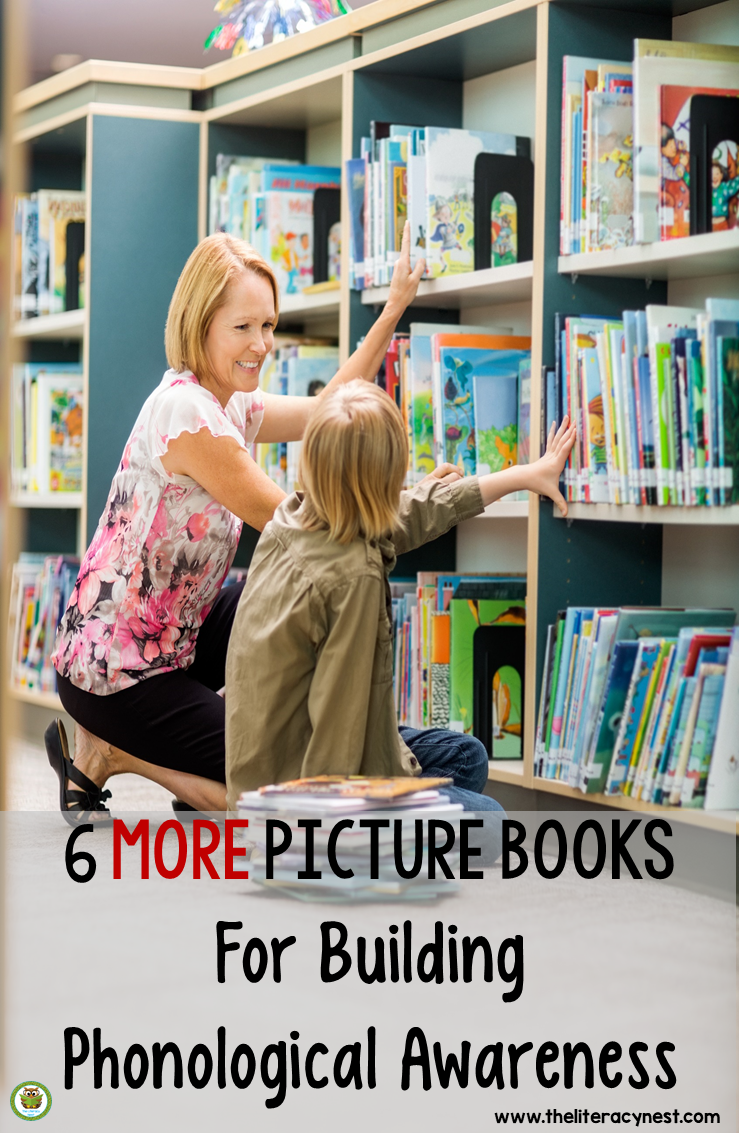
Once you start looking for books to promote phonological and phonemic awareness, you will discover them everywhere. The dozen I have shared are far from the only books that use these skills. Since phonemic awareness develops along a fairly predictable continuum from basic to more advanced, read alouds make a fabulous introduction to new skills such as manipulating phonemes or a review of earlier skills such as rhyming. The same story can be used at a variety of levels of phonemic awareness work. In addition, the context of the story supports the students as they are learning new skills. Students can begin to refine their phonological awareness while using some of their strengths of comprehension, story telling and creativity.
If you find yourself seeking more teaching ideas for building phonemic awareness, try out my email series called, “What’s So Important About Phonemic Awareness?”
This series will give you a FREE download with some phonemic awareness sample games from my Phonological Awareness Bundle. Read what some teachers have said about the Phonological Awareness Bundle already:
- “Great resource for students who still need to work on phonemic awareness. Extremely thorough bundle!” -Nicole
- “Wonderful resource! A well thought out progression, worth every penny.” -Deborah
- “Great resource to simplify the organization/presentation of phonemic awareness activities!”-Margaret
- “Fantastic! Beautifully designed. Leads you through the levels so well. You only have to do the prep once and you’ve got a complete Phonological unit you can use for years. Love it!” -Katharine
- “Wowzers, this product is AMAZING!!! Phonemic awareness is so important for reading success, and this product makes teaching and practicing PA skills fun!! I absolutely love everything about this product, and cannot wait to use it with my students this year!! If I could give this an A+, I would!!” -Erin
- “Emily Gibbons never disappoints!” -Renie
- “FULL of expert ideas! Thank you for this huge resource :)” -Positively Teaching
Share:
